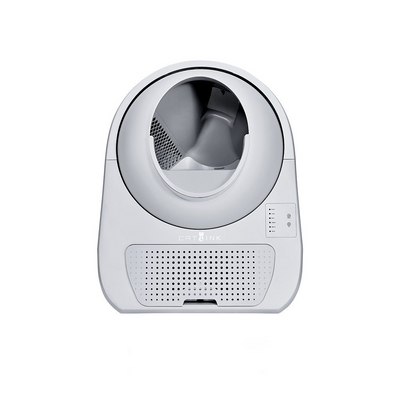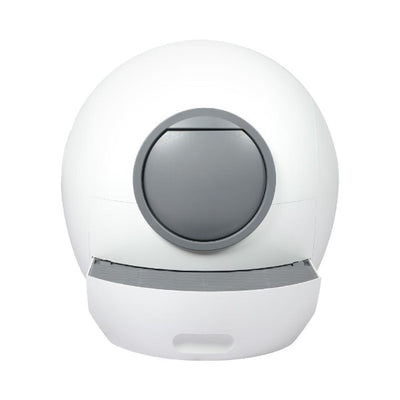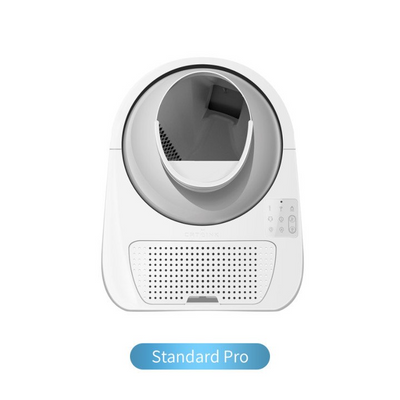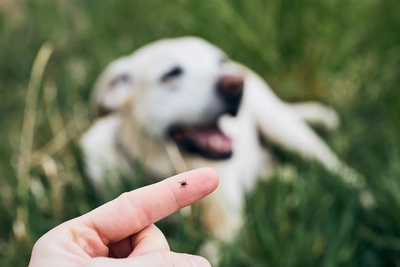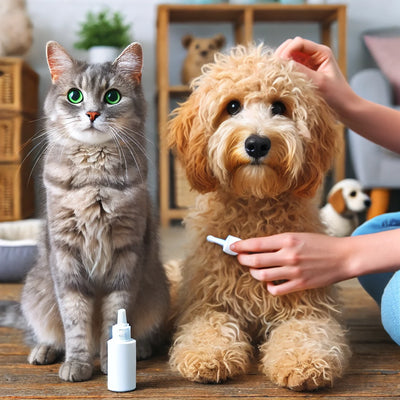Scratching comes naturally to cats. They do it when they’re playing, when they’re stretching, when they’re grooming and sometimes they even scratch when they’re purring or feeling happy. That’s right – it isn’t necessarily a negative or aggressive behaviour. People commonly mistake cats using their claws as a sign of a bad attitude when in fact, they’re just doing what comes naturally.
This natural instinct of scratching is behavioural and has evolved over time for cats to minimize contact with other cats. Scratching is highly territorial and shows other cats in the surrounding areas that the space they’re entering is inhabited by another cat. Cats are relatively non-confrontational creatures.
Cats scratch for a number of reasons and unfortunately the subject of their scratching tends to be our furniture or even worse, us! when your cat has resorted to scratching you, don’t stress! You don’t need to become a human scratching post. There are plenty of ways to divert this behaviour and move them away from scratching you and your furniture.
Why do they like to scratch?
Territory marking
Scratching for cats is just like peeing for dogs – they use scratching as a way to mark their own territory. In fact, cats also use their urine as a territorial marking on horizontal surfaces but when they want to claim a vertical surface, they will scratch to do so. Scratch marks are a visual reminder that the area surrounding your cat is their own and other cats should proceed with caution. You’ll often see your cat scratching around the garden or house if you’ve just moved to a new home or when a new cat or dog is introduced into the family. The same thing happens with young families who have just had a baby – cats become highly territorial and they see anyone new as a threat to their own space.
Cats also like to mix their scent with your scent. This is why you’ll find them scratching areas you spend the most time in like your bed, couch or armchair. Cats will scratch your bed or chair when you’ve been gone for long amount of time – it’s a behaviour loosely related to separation anxiety. Cats do appreciate your company and to an extent this is how they try and express their gratitude and appreciation for you. That’s right! You can consider yourself loved.
Remove dead outer layers of claws
When cats feel that their claws are becoming too long or maybe a bit dirty, they will begin to scratch rougher surfaces like concrete, brick or timber to file their claws down a little. Similar to dogs, cats will scratch their claws in order to file down their nails. They can feel when their nails are becoming a little too long so they will seek out a rough surface like concrete or stone to claw. Repetitive scratching will gradually file down your cat’s nails to their desired length which is why in most cases you will not need to trim their nails for them because they take care of it themselves. After all, cats are famous for being on top of their hygiene – in comparison to dogs at least!
Stress Relief Clawing and scratching can be a release mechanism for cats when they become too wound up. Scratching is therapeutic. It is the equivalent of us reaching for the stress ball (or a hot bath, good book etc). Scratching helps cats remove any tension in their body and is mentally relaxing. You might find your cat scratching when they are frustrated – perhaps they’ve had a run in with another neighbourhood cat. Scratching helps them to wind down a little bit, so it’s important for them to scratch in these situations to stay calm and healthy.
Exercise Having a cat scratcher helps cats exercise as it assists them in releasing aggression and built up anxiety. For humans, it would be the equivalent of spending 15 minutes with a punching bag at the gym. They get to stretch their bodies while using muscles to flex and scratch whenever they play with the scratcher. It’s Pleasurable This goes hand in hand with exercise! Cats see scratching as a fun activity, especially when their scratcher has interactive elements like pompom teasers or little hidey holes to make playtime that little more fun.
How to stop cats clawing furniture
Before we list a few different products to help you move your cat’s claws away from the sofa and onto a scratcher, there are some basic disciplinary tactics you can use right now.
When they approach the furniture and begin to dig their claws into it, tell them sternly ‘NO’ to get their attention away from scratching. You can also try spray them with water if you have a spray bottle – this is fairly unpleasant for cats so they’ll associate scratching with receiving a spritz of water which over time will deter them from scratching the furniture. If your cat actually likes a little spray of water, you can also try using a citrus mix which cats are repelled by. Simply squeeze some lemon juice into the bottle of water and spray when they start scratching.
Additionally, if you have a room that you’d prefer stayed cat-free then section off the area by shutting the door. Your cat will soon learn that they aren’t allowed in the room.
Cat scratchers
This one is a no brainer! If you’re wondering why your cat is using your furniture as their scratching post, chances are it is because you do not have a scratching post. Your cat didn’t really want to scratch your brand new couch either but because there wasn’t anything better for them to scratch, you left them with no option!
If you do have a cat scratcher already and your feline friend still decides to use your furniture, consider the area that the cat scratcher is in. Is your cat scratcher too hard to get to for your cat? If it’s sitting in the garage next to dusty boxes or unused gym equipment, your cat isn’t going to want to go near their scratcher whatsoever. Is it in a quiet room of your house that they don’t generally go into? Your cat usually won’t make a special effort to visit their scratcher if it is in an isolated room or area in your house.
The best place to put your cat scratcher is right next to the item of furniture that they love to scratch the most. By doing this, you’re giving them an alternative that is accessible and directly available to them. Better still, if you have two scratchers it will be even easier to combat your cat scratching in the wrong places.
1) Pawise Single Scratching Post 2) Snooza Cat Pole 3) Pawise Seagrass Scratch Post
Another consideration to make is what material your cat scratcher is made from. Despite what you may think – not all cat scratchers are the same. Look at your cat’s scratcher and ask yourself these questions:
Is it the right size?
Scratchers come in all shapes and sizes but not all of them will be appropriate for your cat. Your cat will generally prefer a scratcher that they can reach the top of when they’re on their hind legs. This allows them to stretch out while they scratch. If the scratcher is too small they won’t feel comfortable using it because they’ll be hunched over and unable to stretch out.
Is it horizontal or vertical?
While plenty of cats like the classic vertical style scratcher, some prefer horizontal scratchers. Horizontal scratchers are generally rectangular in shape. They’re far more subtle and will fit in with the décor in any home.
1) Catnip Scratcher Lounger 2) Kong Naturals Scratcher Incline 3) Trouble & Trix Cat Scratcher Levi Lounger
What texture is it made of?
In the wild, cats will use tree trunks and bark to scratch so your cat’s scratcher should resemble the same kind of texture. Avoid fluffy scratchers – these won’t be enticing for your cat, nor will they feel satisfied after scratching one. The best scratchers have sturdy, durable sisal carpet or rope wound around the scratching post. These are generally durable, sturdy and feel good for your cat to scratch because they have a tough texture. Regular carpeted scratchers are popular but BE CAREFUL – some cheaply made carpet scratchers can damage easily and can become a threat for your cat’s claws
Tip: When you are selecting a scratcher, try picking one in a different colour to your carpet and furniture. This will create a distinction between your cat’s scratcher and furniture that you don’t want them to scratch.
Lastly on this point, don’t forget the rule is 1 cat per scratcher. While some cats may like sharing their scratcher with other cats, others are less friendly about the whole situation. Cats will consider their scratcher their own property that they’ve marked so generally speaking if they have a problem with sharing their toys then they definitely will have a problem with sharing their scratcher! Having two scratchers will usually eliminate this problem so there won’t be any fighting over the scratching post. Make sure both cats know who owns which scratcher – to do so you can separate both cats and play one-on-one with each cat with their individual scratcher to ensure they know which is theirs.
Nail trimming
Products to Help!
Cat scratch spray When your cat has a favourite area in your house to scratch in, but it isn’t so much YOUR favourite place for them to scratch, try using a cat scratch spray. These sprays work to deter your cat from loitering and scratching in a particular area. If your cat likes to scratch every piece of furniture in a room this is a practical solution. Simply spray a small section of your couch or chair with one of these sprays to make sure that it doesn’t discolour or fade first, then apply liberally around the furniture and the room. The spray isn’t harmful to cats whatsoever, it contains a few different natural deterrents which makes the area a little less desirable for cats to be in. Aristopet No Scratch Spray
Note: Consider using the scratch spray as a last resort, if there’s a room in your house with precious or expensive furniture consider barricading the room or shutting the door so your cat recognises the area as ‘out of bounds’ or off limits.
Cat Claw Scissors While cats will take care of their own hygiene, sometimes their claws will be ignored in the self-grooming process. When this is the case, it may be time to intervene to keep them happy and healthy. If your cat is finicky and fidgets a lot then you’ll need to pick a time when they’re calm and relaxed. It is recommended that you use cat nail clips that have been specifically manufactured for cat claws for the best results and a painless process. Always be gentle and patient with your cat and if you need to, take as many breaks as required so nobody gets hurt or frustrated by the clipping. Glamourpuss Cat Claw Scissors
Sticky Paws If your cat has a particular favourite item of furniture to scratch, Sticky Paws are an ideal and subtle way to deter your cat from clawing the particular spot. Sticky Paws are adhesive and stick onto your furniture. When your cat goes to scratch that certain spot, they immediately stop because the feeling of something sticky underneath their paws is really unpleasant. Sticky Paws will help encourage your cat to move on from the furniture and point them in the direction of the scratcher instead. Sticky Paws For Furniture – Cat Deterrent Strips
Cats are gonna scratch
Cats will always need to scratch – it’s instinctual! While we don’t want them to stop scratching altogether, it is important for them to understand where they are allowed to scratch in your house. Once they’re familiar with their scratcher you’ll notice a significant difference in your house – namely furniture that is intact and not scratched to smithereens!
So while you may think it’s a bit of an expensive exercise stocking up on cat scratchers and sprays, consider the time and money you’ll save in the long run once your cat stops scratching your precious furniture. For a harmonious environment in your household keep your cat happy and occupied with a scratcher. Remember: The more time they play with their scratching post the less likely it is that you will become a human scratching post.
